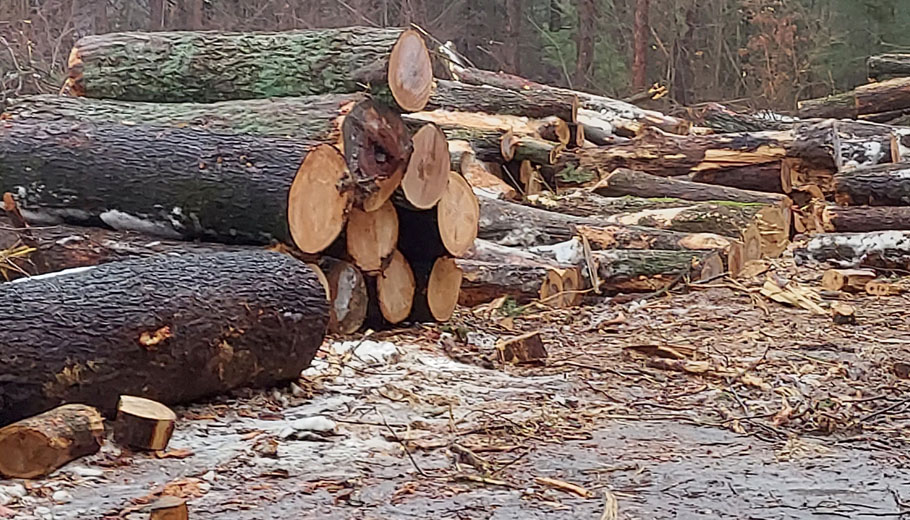
Trees being removed to open canopy for restoring oak
By Holly Neumann
A state-owned natural area in Waupaca County is getting a facelift due to a timber sale established at the property in 2019.
The main objective for the project at the Myklebust Lake State Natural Area, located just south of Iola off of State Highway 49, was to restore the open oak woodland community north and east of the lake. The second was to thin the red pine plantations south of the lake.
“Historically, this site would have looked much different than how it did prior to the timber harvest,” said Jake Koebernik, a habitat biologist with the state Department of Natural Resources’ Bureau of Natural Heritage Conservation. “Instead of being a dense mixed forest, large open-grown oak trees would have been the primary species and were scattered throughout the property. Due to the more open canopy, a lush understory of native grasses and wildflowers would have also persisted.”
Over time, the site has become dominated by maple, basswood and pine trees, which have started to shade out the ground layer.
“Several factors contributed to this, the primary one being a lack of fire on the landscape,” he said. “The first step in restoring this site back to an open oak woodland was to remove the larger diameter maple and pine.”
DNR ecologist Joe Henry and foresters Joe Tucker and Jason Hennes also worked on the project to meet property objectives outlined in the Interim Forest Management Plan, Koebernik said.
“Oaks that would remain after the harvest were marked with green paint and retained based on their anticipated lifespan, quality, canopy composition, species and spacing between trees,” he said.
To lessen the impact and expansion of invasive species after the harvest, a crew has worked to control common buckthorn, garlic mustard and Japanese hedge parsley across the site since 2009.
“Follow-up work is expected and will remain a priority over the next few growing seasons,” Koebernik said. “In addition to invasive control, the crew will spread native, locally sourced warm-season grass and wildflower seed across the entire oak woodland to compete with any remaining invasive species and provide a diverse species mix for pollinators and wildlife species.”
Oak restoration
Prescribed burns will be planned on a four- to five-year rotation in an effort to keep the site an oak woodland community.
“This is a critical step in the restoration process,” Koebernik said. “It will promote oak regeneration, keep invasive species and nondesirable woody species in check and stimulate native forb and grass growth.”
The total size of the project is 42 acres, which can be further broken down to 17 acres of pine thinning, 19 acres of oak restoration and six acres of field clearing.
Approximately 2,550 tons of material has been cut and removed, according to Koebernik.
“Visitors can expect the site to be more open with more sunlight reaching the ground layer than in previous years,” he said. “This will increase the native grass and wildflower growth in the future.”
A more diverse vegetative community will also begin to develop with increased sunlight through the canopy.
“This will be noticeable throughout the growing season with spring ephemerals, mid-summer bloomers and late-season flowers such as asters and goldenrods,” Koebernik said. “All these plant species will have a positive effect on pollinators. Wildlife species such as deer and turkey will also benefit from an increase in oak regeneration and a habitat structure that provides food, bedding and nesting cover.”
